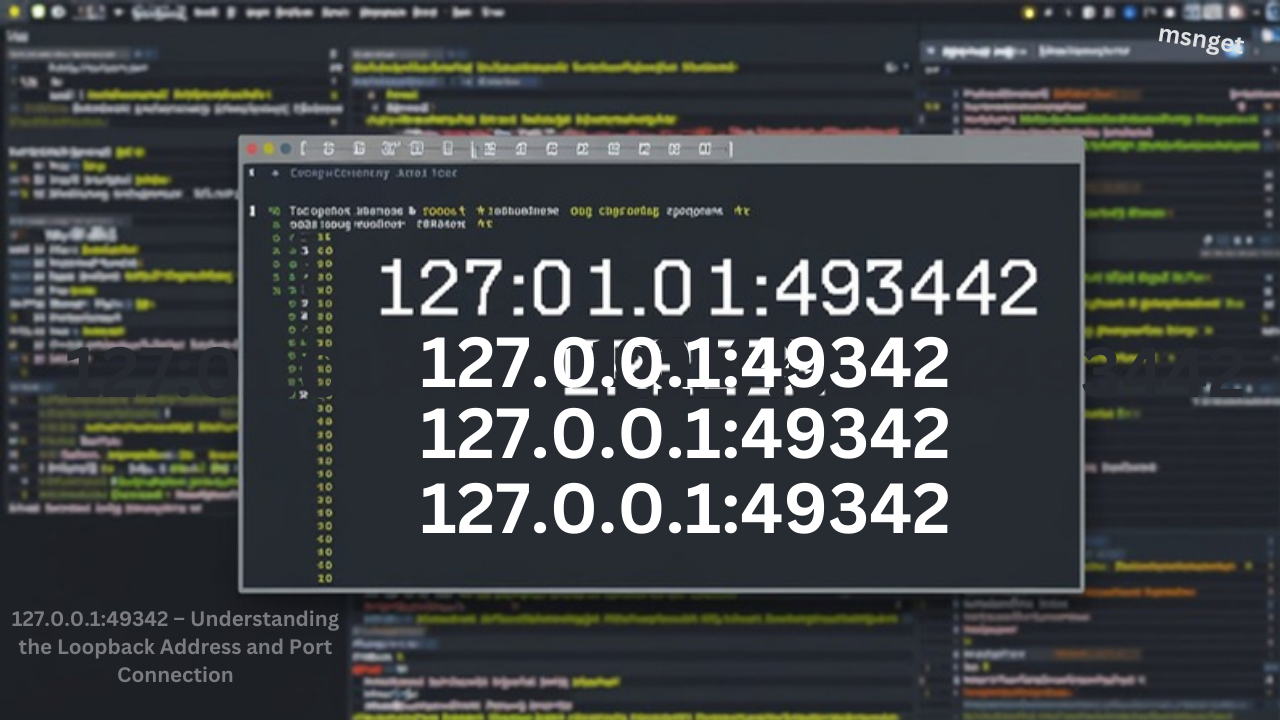

127.0.0.1:62893: A Sweeping Guide
127.0.0.1:62893 might initially seem overwhelming, but this technical concept becomes clear and fascinating with the correct explanation. Let’s delve into what this address represents, its purpose, and why it’s essential for development, testing, and troubleshooting in the digital realm.
What Is 127.0.0.1:62893?
At its core, 127.0.0.1 is a loopback IP address, often called “localhost.” It directs network traffic back to your device, making it invaluable for internal communications. Meanwhile, 62893 is a port number, serving as a virtual doorway that applications use to send and receive data. Together, 127.0.0.1:62893 signifies a localized network communication point typically used for development, debugging, and specific software operations.
Why Is the Loopback Address Important?
The loopback address, 127.0.0.1, is a foundational element of modern networking. Here’s why it matters:
- Local Testing and Development
- Developers use the loopback address to simulate real-world network conditions without exposing their applications to the Internet. This allows them to test features securely within their machines.
- Internal Communications
- Many services and software rely on 127.0.0.1 for internal communication. For instance, databases or APIs often bind to this address to restrict access to the local machine only.
The Role of Port 62893
While 127.0.0.1 handles the IP side of things, 62893 focuses on ports. Ports are like unique mailboxes for data packets, ensuring the correct information reaches the intended application.
Why 62893?
Port 62893 falls into the dynamic port range (49152–65535). These ports are not pre-assigned to any specific service, meaning they’re typically used temporarily or by custom applications. The flexibility of dynamic ports makes them perfect for:
- Temporary Connections: Such as during local software testing.
- Custom Services: These applications define their specific ports for internal communication.
Common Uses of 127.0.0.1:62893
Understanding the practical applications of 127.0.0.1:62893 helps unravel its relevance. Here’s how it’s commonly utilized:
Also Read: 127.0.0.1:49342 – Understanding the Loopback Address and Port Connection
Local Development Servers
Developers frequently set up local servers using Node.js, Python, or PHP. These servers simulate how a website or application would behave online, with 127.0.0.1:62893 often representing the address and port combination for access.
Debugging Applications
Debugging involves testing and refining applications. By connecting to 127.0.0.1:62893, developers can inspect how their programs handle data, monitor network traffic, and resolve any issues.
Software Communication
Some software tools, such as messaging systems or database servers, use dynamic ports like 62893 to facilitate internal data exchange.
Troubleshooting Issues with 127.0.0.1:62893
Occasionally, problems arise when using 127.0.0.1:62893. Here are some troubleshooting tips to resolve these issues efficiently:
Check for Conflicts
Ensure that all applications are already using port 62893. Multiple applications attempting to use the same port can cause errors.
Verify Firewall Settings
A misconfigured firewall might block traffic to or from 62893. Update your settings to allow communication over this port.
Restart Services or Devices
Restarting the affected application or your computer can sometimes resolve connectivity problems related to 127.0.0.1:62893.
Examine Application Logs
Logs provide valuable insights into errors or misconfigurations affecting the address and port.
How to Secure 127.0.0.1:62893
Security remains crucial, even when dealing with local addresses. Follow these tips to keep your setup secure:
- Restrict Access: Configure software to only allow connections from trusted sources.
- Use Secure Protocols: Employ HTTPS or encrypted communication methods when testing sensitive data.
- Monitor Logs: Regularly check logs for unusual activity to detect potential vulnerabilities.
When to Use 127.0.0.1:62893
This address and port combination proves helpful in specific scenarios, including:
- During Development: For testing websites, applications, or APIs locally.
- For Internal Networking: When connecting services on the same machine.
- While Learning: It’s an excellent tool for students and beginners exploring network programming.
Conclusion
The combination of 127.0.0.1:62893 is a powerful tool in development, debugging, and internal communication. You can harness its potential for efficient testing and secure software development by understanding its purpose and how it functions.
Whether a seasoned developer or a beginner, mastering 127.0.0.1:62893 opens doors to greater control over local networking, ensuring seamless application performance and growth.














